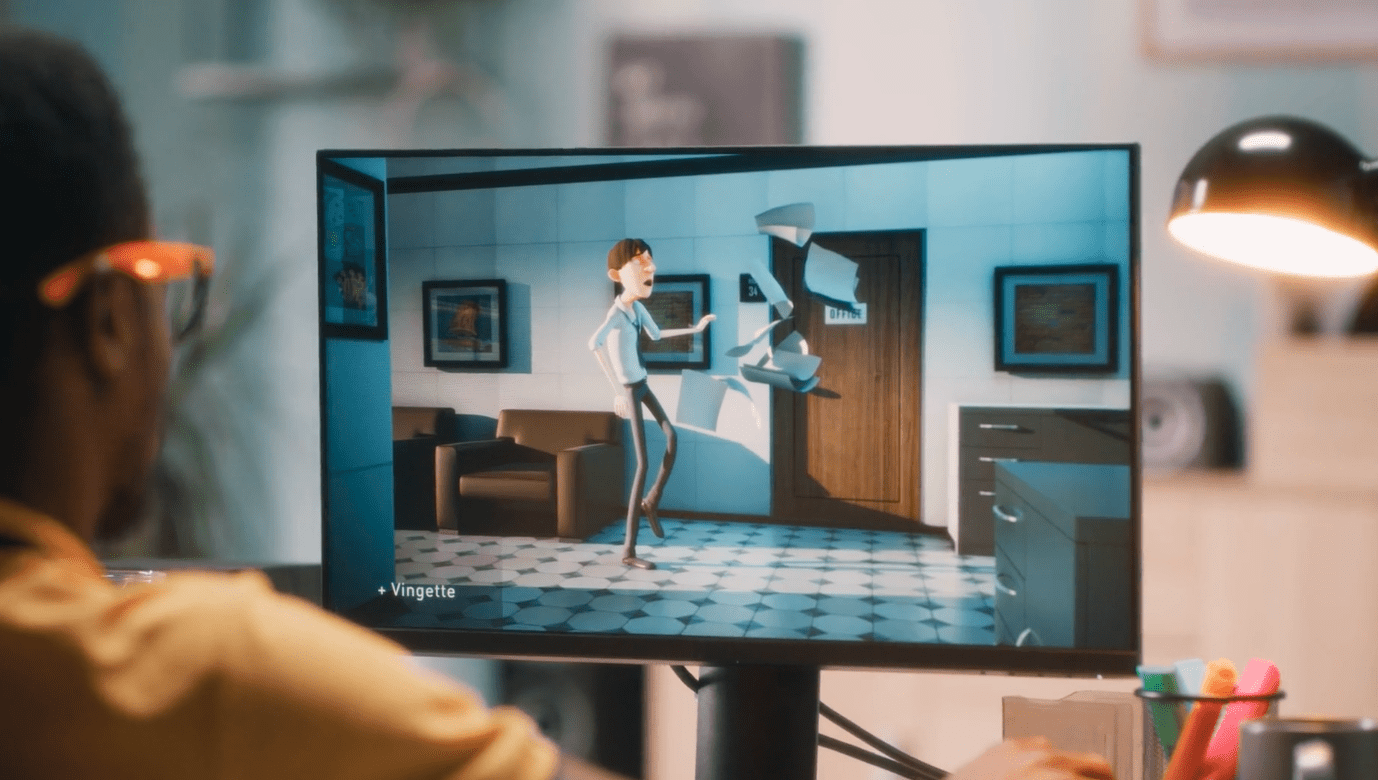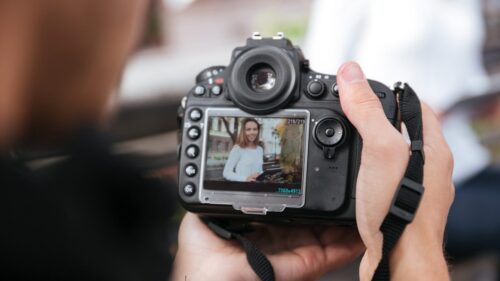Whether you’re telling your brand’s story, giving an instructional lesson, or simply want to make a strong visual impression with your next video project, incorporating various types of motion graphics brings your words to life with colorful, eye-catching animations. Far more dynamic than a text-based slideshow, motion graphics help creators produce engaging content that gets the message across and makes an impression with the audience.
Top 10 types of motion graphics
With so many different types of motion graphics out there, you have a ton of interesting options for spicing up your next video project with a splash of creativity. Let’s take a look at 10 of the most popular use cases for motion graphics.
Animated Illustrations
Among the most popular applications for motion graphics are illustrated product, explainer, and instructional videos. The animated illustrations in this type of video are usually accompanied by a voiceover, and they generally help explain a complex concept with visuals. Examples could include a video announcing a new product launch where its features and design are highlighted using motion graphics, or an instructional video that walks through a new process step-by-step.
Animated logos
Give your static brand mark a motion graphics makeover with a dynamic animated logo. Logo motion graphics add visual interest while offering a clue about your brand’s personality. Animated logos can be added to company websites, video ads, and social media posts. They can even be used to bookend other branded video content you create for a more visually unified look.
Animated titles
Animated titles are used to place text over video to help emphasize a point or convey additional information to the viewer. A common example of these are chyrons, the motion graphics that you often see in lower thirds on many news broadcasts.
Download this Breaking News Intro motion graphic
Transitions
Even the split-second transitions between scenes play an important role in visual storytelling, which is where transition effect motion graphics come in. Transitions help establish mood and tone from scene to scene, with examples including hard cuts, dissolves, and glitch effects. Video projects that utilize transitions effectively will lead the viewer through your narrative in a more natural way, while the wrong transitions can be jarring or displeasing to the eye, which can get in the way of conveying your story.
Be sure the transition effects you’re using work with the general flow of your video, not against it. For instance, a fade-out/fade-in transition visually cues the audience that a scene has ended. It primes their eyes and minds for something different and new coming up in the next scene. A cross-fade transition, in which the next scene is slowly faded into view, can be used to imply the passage of time or lead into a flashback sequence.
Animated infographics
Infographics are a great example of how motion graphics can add dynamism to an otherwise dry visual. Lists, graphs, and charts are useful for highlighting important information, but offer little in terms of visual flair. Animated infographics, on the other hand, add a pop of movement to otherwise static images. This can help get your information across more effectively simply by making it more interesting to look at.
UI animations for apps or websites
The graphic quality and overall visual presentation of websites and apps has improved dramatically over the course of the smartphone era. As technology has evolved, it’s now easier than ever to make websites or apps a treat for the eye by incorporating UI animations into the design. This can include anything from buttons that animate when you press them to menu screens that slide in or out of view in an interesting way.
Typography
Animated typography, sometimes called kinetic typography, is simply text in motion. It’s commonly used in brief, punchy visuals that are meant to convey a specific message about a service or brand in a short period of time, primarily using text. A common real-world example of animated typography is the on-screen lyrics that help karaoke singers follow along to the words, or what you may see in a lyric video. You may also want to use kinetic typography to emphasize a quote in a video interview or a keynote speech recording.
GIFs
Who doesn’t love a GIF? The classic animated micro-loops have brought joy to countless internet users for decades. They also happen to be an effective way to draw visual attention, especially on social media, and are dead-simple to make.
Download this Dog in Sunglasses motion graphic gif
Presentation graphics
Nothing makes an audience member’s eyes glaze over faster than a dull speaker. But even a brilliant presenter is fighting an uphill battle keeping audiences awake when showing screen after screen of flat, stagnant text. Similar to how infographics can be improved by adding motion, even the driest of presentations can be given a spark of creativity and interest with a few tastefully incorporated motion graphics. Subtlety is key here, as adding too much can make your presentation appear cheap or unprofessional. Any motion graphics you deploy in a presentation should serve a purpose. Adding something as simple as an attractive animated title card festooned with on-brand colors, or an animated element in a lower-third indicating a location or speaker’s name can add visual interest — while also drawing the audience’s eye to a bit of useful information.
Advanced VFX
The motion graphic types we’ve discussed so far are on the simpler side of the animation spectrum, but visual effects (VFX) really crank the creativity up a notch. These feature eye-popping cinematic elements, but they’re also a little more complicated to create because they’re generated by advanced computer software that requires a higher skill level to use. Advanced VFX elements add complex and visually arresting imagery, often merging the real world with something fantastical for an engaging and exciting presentation. Storyblocks offers a wide assortment of royalty free VFX video clips you can use to ensure your next video really will turn some heads.
What are the steps for making a motion graphic?
By now, you should have a better grasp of what motion graphics are and how creators can use them for more impactful visual storytelling across a variety of formats. Storyblocks has a huge selection of free, high-quality motion graphics templates available for inspiration — but you may want to know how to make your own motion graphics. The following steps will have you creating and sharing original motion graphics in no time.
Step 1: Create a script
Good motion graphics don’t happen by accident. They’re carefully planned out and meticulously designed to ensure maximum effectiveness. An essential part of that planning involves considering your target audience and knowing exactly what you want them to take away from your video.
Are you trying to get the audience to feel a certain way? Do you want them to remember an important process or piece of information? Would you like to help them learn a new skill? Figuring these things out before you start will give you a foundation to build on as you put your video together. Also, keep in mind that motion graphics are a short-form medium, so you’ll want to make sure the information they contain is presented in a highly digestible manner.
If you’re creating content for someone else, consult with the client along the way to ensure you’re aligned conceptually on the script before you start on the visuals. Going back in and modifying motion graphics after the design phase can create a ripple effect that might require you to make additional tweaks and adjustments, which can be time consuming.
Step 2: Storyboard your idea
Motion graphics are a visual medium, so it makes perfect sense that creating them involves visuals as well. Storyboards are simple sketches that outline your video shot-for-shot. They’re a great way to get a sense of the general visual flow of your project before a single frame is committed to video. Storyboarding is typically done on a whiteboard or easel, which facilitates collaboration between the design and production teams.
Once a consensus on the look-and-feel of the project is reached and committed to paper, you’re ready to move into the design phase.
Step 3: Design your video
Now that you’ve established the conceptual and visual framework for your video, it’s time to start bringing it to life. In the design stage you’ll select the precise visuals that will make up your motion graphics — everything from the text to the colors to the animated elements. These design choices should be made considering the tone and purpose of the video, as well as any relevant brand colors and style flourishes to include.
Step 4: Animate it!
With everything in place, it’s finally time to add motion to your project. As you decide which motion graphic effects to include, consider how each will help you tell the story you’re attempting to tell. The style of animation should be consistent with your brand, and each scene transition should complement the narrative.
You’ll also want to strike a balance with pacing to ensure whatever information your video contains is conveyed quickly enough to get your point across in the allotted time — but not so quickly your audience misses the point. Conversely, it should be presented slowly enough that your message can be fully absorbed, but not so slow that the audience just wishes you’d get to the point already.
An optional finishing touch is to add music or sound effects to your motion graphics. The right music can add a subtle yet unmistakable emotional resonance to your project. And a well-placed sound effect, though strictly not necessary for motion graphics, can punctuate a moment with levity or poignancy. Remember: Sometimes less is more in good design, so consider how music and sound effects will genuinely add value to the production. It’s ok to leave them out if they’ll only serve to distract from the message.
Download Premiere Pro motion graphics templates with Storyblocks
Ready to start enhancing your videos with motion graphics but don’t know where to start? Explore Storyblocks’ diverse selection, featuring hundreds of royalty-free motion graphics templates for both Premiere Pro and After Effects.
What you get with Storyblocks
Storyblocks is your one-stop destination for high-quality stock video, audio, and images. As a subscriber, you’ll have unlimited access to millions of royalty-free video clips, templates, and special effects. Let your imagination run wild as you scroll through our content library and discover new tools and media elements to help you tell better and more moving stories.



